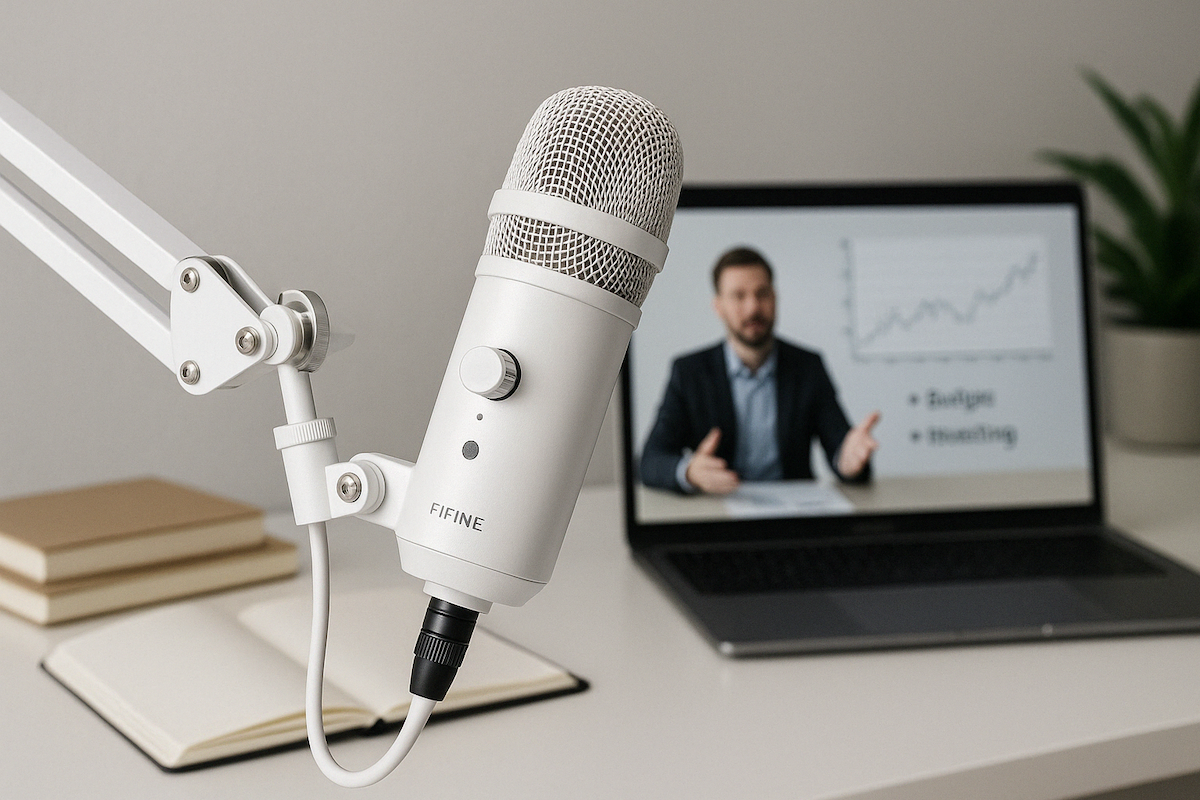
Table of Contents
The Growing Demand for Financial Education Content
The finance technology landscape grows increasingly complex each year. This complexity fuels substantial demand for high-quality educational content. While written guides have their place, many professionals now gravitate towards audio and video formats for unraveling intricate financial systems or processes. But does the technical quality truly matter?
Insights from viewer feedback across various platforms indicate audio quality often emerges as the single most critical technical factor determining engagement and trust. Even the most insightful analysis of, say, NetSuite customization or Workday Financials reporting, becomes practically useless if the audience can’t clearly hear the explanation.
Why Audio Quality Is Paramount for Financial Topics
Financial concepts demand precision. Explaining multi-entity consolidation rules, IFRS 16 lease accounting nuances, or sophisticated Power BI DAX measures leaves no room for ambiguity. Missing a single word can lead to significant misunderstanding. Unlike more general content where listeners might infer meaning, financial tutorials require absolute clarity. Poor audio doesn’t just annoy; it creates cognitive load, actively distracting from already challenging material. I’ve seen viewer comments specifically citing difficult audio as a reason for abandoning otherwise valuable tutorials. It’s a common pitfall, unfortunately.
Key Technical Elements for Better Audio
Improving audio doesn’t necessarily require a professional studio. Focusing on a few key microphone features can dramatically enhance financial tutorial effectiveness:
- Microphone Type (Dynamic Preferred): Dynamic microphones generally excel at rejecting background noise compared to condenser mics. This is crucial when recording in typical home or office environments where ambient sounds (HVAC, computer fans, external traffic) are common. You don’t want a humming refrigerator detracting from your explanation of GAAP principles.
- Pickup Pattern (Cardioid Focus): A cardioid pattern primarily captures sound from the front, minimizing room echo and off-axis noise. This creates a clearer, more direct vocal sound, lending perceived authority and keeping listener attention focused during complex walkthroughs (like configuring ADP Workforce Now workflows).
- Usability Features (Controls & Monitoring): Integrated controls like a physical mute button, gain adjustment, and a headphone jack for real-time monitoring are invaluable. Discovering an audio issue after recording a lengthy SAP Concur configuration tutorial is incredibly inefficient. Direct monitoring prevents this.
Setting Up Your Recording Environment
Beyond the microphone, simple environmental tweaks help:
Position the microphone correctly (typically 3-6 inches from your mouth, slightly off-axis helps reduce plosive sounds (harsh ‘p’ and ‘b’ sounds). Basic acoustic treatment (even a strategically placed blanket or foam panel) behind the microphone can dampen room echo. Always perform a quick level check and test recording before starting a full session) consistency matters.
Structuring Effective Financial Tutorials
Of course, great audio needs great structure. Financial system tutorials often benefit from a consistent format. Start with a concise overview: state exactly what the viewer will learn. Briefly explain the real-world application or problem this knowledge solves. The core should be a clear, step-by-step demonstration. Crucially, address common pitfalls or alternative scenarios users might encounter, this builds credibility.
Monetization and Building Authority
High-quality audio production isn’t just about clarity; it signals professionalism and enables monetization. Crisp audio enhances the perceived value of premium tutorial series on specific systems (Acumatica, Dynamics GP, etc.). It positions the creator as a credible expert, potentially leading to consulting or speaking opportunities, using the polished content as a portfolio.
Audio: Your Competitive Edge
In the crowded field of finance and technology content, superior audio provides an immediate competitive advantage. It conveys attention to detail, a quality highly valued by financial professionals. While the accuracy of the content is paramount, the delivery medium heavily influences its reception and impact.
For financial technology specialists aiming to create educational content, investing moderately in decent audio equipment offers a significant return through better engagement and enhanced authority. You don’t need to become an audio engineer (your expertise is finance!), but understanding these basics makes a world of difference.
What technical hurdles have you faced creating financial education content? Connect with me on LinkedIn to share your insights.